Last Week I Saw Someone Badly Misunderstand Type 2 And Since Today I Got The Results From My Last Blood
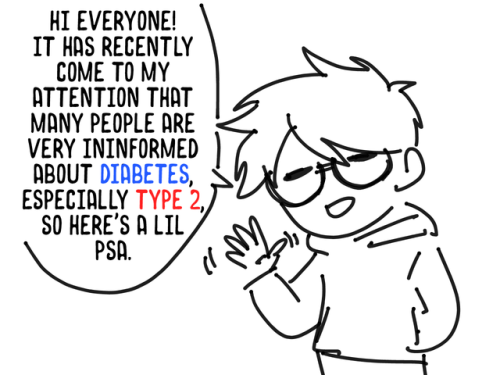
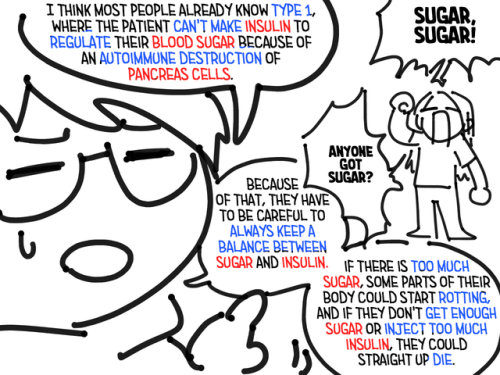
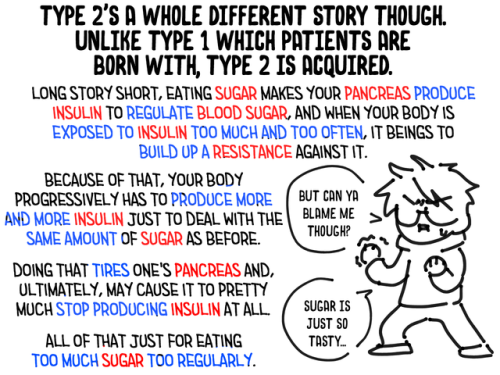
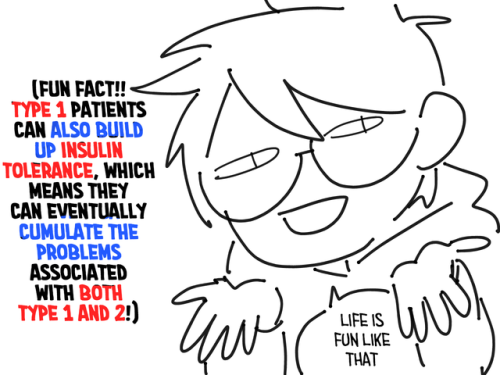
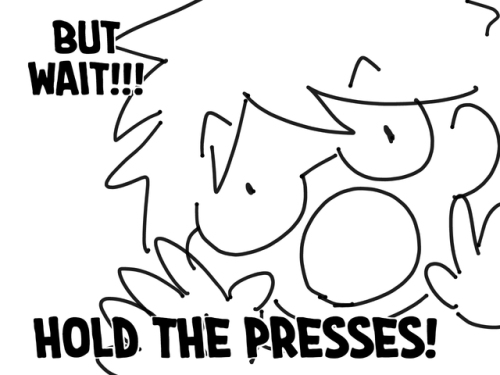
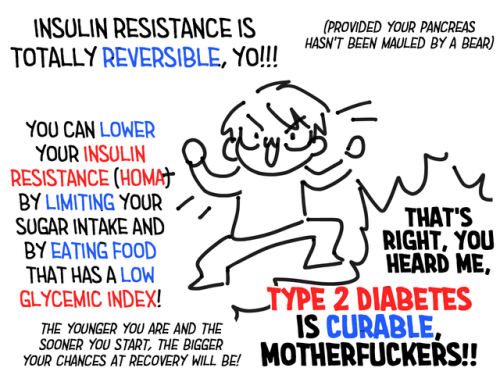
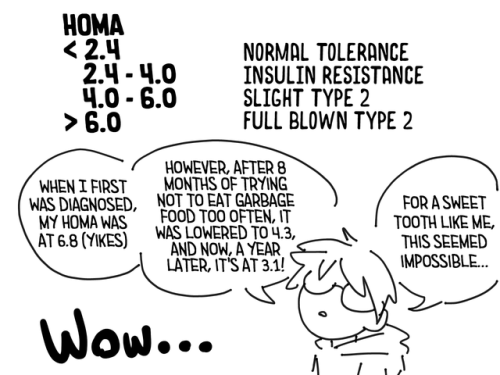

last week i saw someone badly misunderstand type 2 and since today i got the results from my last blood test i thought itd be a good time to make this lil PSA
More Posts from Gottadotherightthing-blog and Others




Useful Health Tips!

Howdy, Dr.! I’ve been “surprised” with news that I may be receiving a basset hound puppy sometime before the end of the year. It’s a good surprise and I’m really excited. I’ve only ever been adopted by full grown street dogs/strays, and have little (read: no) experience raising a pure bred puppy..! I’ve been consuming as much literature as I can about these dogs and wanted to know what your experience with them as a vet has been! Also, if you don’t mind sharing–what’s your personal opinion on the ethics of this breed? I know breeds with extreme anatomy can be super dodgy, and in some cases, pretty unethical due to a decreased quality of life caused by the traits that have been bred into them (ie: pugs). A lot of what I’m reading is recommending things to look out for/avoid in regards to the “breed standard”–but I’m having a hard time finding things to look out for/avoid from a veterinary/health perspective. This is a lot of questions… so I’ve included a sketch for you (of you?), as tax! :D Cheers!!
Submitted by @painted-bees
Mate, you have no idea how close I was to rage quitting Tumblr a few hours before this submission came in. Thank you, it’s beautifully done.
You get to skip the queue.
The breed is fairly uncommon, especially compared to the more popular beagle and dachshund, but there are a few things worth noting from a veterinary perspective.
These dogs are deep chested enough to be able to develop Gastric Dilatation Volvulus, aka ‘bloat’. This is important to remember because if a dog’s stomach twists on itself, cutting off the oesophagus and blood supply, then you don’t have a lot of time to get it to surgery if it’s going to survive. GDV is typically thought of as a ‘big dog’ disease, but Basset Hounds aren’t really little dogs, they’re just short dogs.
Most dogs of this breed that I’ve encountered have been through emergency, due to Intervertebral Disc Disease, much like our friend the dachshund. These dogs racked up a vet bill of thousands of dollars to be able to walk again.

The breed is well known for having excess skin, and many individuals will have excessive skin on their face, resulting in eyelids that either roll inwards (Entropion) or outwards (Ectroption). I have a pet hate for bad eyes, and having fury skin that rubs on the eyeballs from entroption is one definition of ‘bad eyes’. Picking dogs that have neat eyelids is highly advisable, otherwise this structural issue will require surgery to correct.
The loose eyelid skin also seems to predispose to cherry eye, or prolapse of the 3rd eyelid gland. Again, surgery would generally be required.
The osteochondrodysplasia that gives this breed its short legs also leaves them prone to elbow dysplasia , as well as IVDD above.
The big floppy ears, a distinctive feature of the breed, and the extra skin around its neck frequently leave these dogs prone to skin and ear infections. While they can be reduced a little with careful maintenance the more skin flaps the dog has, the more issues you would expect.
As for the ethics of this breed, like many things my concerns come down to the extremeness of morphology. The dog in the gif above is a fairly moderate example of a Basset hound, but the dog pictured below…

(Image from Wikipedia)
… is not so much. The excessive skin provides no benefit to the dog, if it gets any lower and saggier then this individual is going to be dragging its willy along the ground, and I have seen a couple of dogs that have a permanent ventral chest/abdominal rash because they drag on the ground. This is worse if the dog becomes obese, which is more common in dogs that can’t exercise due to joint or spinal disease, which are both common in this breed.
The ethical issues in breeding these dogs are broadly the same for any other breed, aesthetics should not be prioritized over health and function of the dog and ‘line breeding’ shouldn’t be encouraged.

Ol’ Gray Beard

To Those Feeling Drained
Many souls are feeling drained emotionally, physically, spiritually and energetically, due to the current social and political climate. This energy transference happens via heart, mind, spirit and direct contact. The great news is that you are feeling! You are empathetic to the world of hurting souls around you. You are not closing yourself—or your gifts, off to the world in its time of need. Times like these are why we do the work. A mass awakening is happening, as it must. A sacred fire has been started. Chaos comes before order. Pain before birth. We are experiencing an energetic detox on a mass scale. Human parasites who mean us no good, are being revealed daily. These times evoke a change in the course of history, every great period has had one; this is ours. So, how do we feel, connect, share our gifts, light and works with the world in this current state without becoming drained in the process? We vibrate higher daily. That simple. There are endless modalities for vibrating higher. You may already have your favorite routine in practice; if so, keep up the great work. If not, may you be inspired and fired up to begin yours. No mistake about it, this country is at war—with itself, an energetic war, a moral war, a vibrational war, and an ethical war. In the human body, this is known as disease; at war with itself. How to cure and overcome dis-ease? We cure and overcome dis-ease by creating a suitable environment for healing and renewal to take place. Through vibrating higher daily in our food choices, physical fitness, stress control, routines, thoughts and overall mindset and lifestyle—healing, restoration, and renewal organically take place. To sum it up….. do more of what makes your mind, heart, and body come alive, restore and come back to center…..and do less of what does not. The world and your life work need you strengthened and vibrating higher now, more than ever. So feel, connect, show love, have compassion and be a light to the world. Just be mindful to vibrate higher through self-care. Recharge, release, restore, renew, nourish, and find your heart, mind and soul’s balance. Vibrating higher daily is your protection. —Lalah Delia | VibrateHigherDaily

The number of people donating their bodies to science has doubled in the last ten years because funeral costs are so high, and most schools will cremate the donated body when they are done and return it to the family at no cost.
I made this guide for my mom because she is trying to eat more plant based! I hope this helps you too :)
Vitamins: - B1 (Thiamine) - B12 (Cobalamin) - B2 (Riboflavin) - B3 (Niacin) - B5 (Pantothenic Acid) - B6 (Pyridoxine) - B7 (Biotin) - Folate - Vitamin A - Vitamin C - Vitamin D - Vitamin E - Vitamin K
Minerals: - Calcium - Copper - Iron - Magnesium - Manganese - Phosphorus - Potassium - Selenium - Sodium - Zinc
B1: Maintains healthy hair, nails and skin and aids in mental focus and brain function. -Nutritional yeast, pine nuts, soymilk, sunflower seeds, sesame seeds, green peas, asparagus, most beans, rice bran, watermelon, whole grains, macadamia nuts, artichokes, coriander.
B12: Red blood cell production, needed for optimal brain function to prevent depression and mania. Aids in digestion and improves iron uptake. -Fortified almond milk, fortified cereals, spirulina, vegan protein powder and nutritional yeast. I just take a B12 tablet J B2: Converts food to energy, maintains healthy hair, nails and skin. Aids in mental focus and brain function. -Whole grains, almonds, sesame seeds, spinach, fortified soy milk, mushrooms, quinoa, buckwheat and prunes. B3: Converts food to energy, maintains healthy hair, nails and skin. Aids in mental focus and brain function. -Chili powder, peanuts, peanut butter, rice bran, mushrooms, barley, potatoes, tomatoes, millet, chia seeds, whole grains, wild rice, buckwheat, green peas, avocados, and sunflower seeds. B5: Converts food to energy, maintains healthy hair, nails and skin. Aids in mental focus and brain function. -Nutritional yeast, paprika, mushrooms, sunflower seeds, whole grains, broccoli, avocados, tomatoes, soy milk, rice bran and sweet potatoes. B6: Aids in maintaining homeostasis, prevents anxiety by helping the amino acid tryptophan to convert to niacin and serotonin for healthy nerve function. Also helps ensure a healthy sleep cycle, appetite, and mood. Helps with red blood cell production and immune function. - Almonds, chia seeds, peanuts, sweet potatoes, peanut butter, onions, oats, tomatoes, carrots and walnuts.
B7: Converts food to energy, helps reduce blood sugar by synthesizing glucose, helps make and break down fatty acids needed for healthy hair, skin and nails. - Almonds, chia seeds, peanuts, peanut butter, sweet potatoes, oats, onions, tomatoes, carrots and walnuts.
Folate: Merges with B12 and Vitamin C to utilize proteins and is essential for healthy brain development and for healthy red blood cell formation. - Spinach, beans, lentils, asparagus, lettuce, tomatoes, broccoli, avocados, mangoes, oranges, whole grains, basil, peanuts, artichokes, peanut butter, cantaloupe, walnuts, flax seeds, sesame seeds, cauliflower, sunflower seeds, peas, celery, hazelnuts, and chestnuts. Vitamin A: Keeps skin healthy, improves immune system function and aids in the production of healthy blood and cellular function. - All leafy greens, sweet potatoes, pumpkin, carrots, winter squash, wheatgrass, grapefruit, cantaloupe, red bell peppers, orange bell peppers, and goji berries. Vitamin C: Helps fight inflammation, improves your mood, and helps fight off diseases and colds. Beneficial for skin, hair and nails and supports natural collagen function in the body. - All leafy greens, all vegetables, all fruits, chestnuts, goji berries. Oranges, lemons, limes and fortified orange juice are the best sources.
Vitamin D: Helps with bone health, digestive health, overall metabolic health, and important in preventing muscle weakness, cancer and depression. - All types of mushrooms, fortified cereals, almond milk, soy milk and the sun!!
Vitamin E: Protects your skin, fights the look of aging. It’s a powerful fat soluble antioxidant that helps protect cell membranes against damaged caused by free radicals. Helps with cholesterol. - All nuts, all seeds, avocado, spinach, rice bran, wheat germ, whole grains, broccoli, mango, tomatoes, kiwi fruit, swiss chard, olives, mustard greens and asparagus.
Vitamin K: Helps with blood clotting to prevent excessive bleeding. Also helps prevent blood clots. Important for protecting our bones and prevents easy breaks and fractures. -Kale, spinach, romaine lettuce, swiss chard, parsley, Brussel sprouts, broccoli, cabbage, blueberries, prunes, grapes and raspberries. Calcium: For bone building, as well as responsible for proper muscle contraction, maintenance of the heartbeat and transmission of nerve impulses. -Broccoli, Brussel sprouts, butternut squash, carrots, cauliflower, kale, sweet potato, chickpeas (hummus), lentils, pinto beans, black beans, kidney beans, fortified almond milk, fortified soy milk, whole wheat, fortified orange juice, orange and raisins.
Copper: Helps with bone and connective tissue production. Also helps produce melanin. Without it you can cause osteoporosis, joint pain, lowered immunity and helps absorb iron. -Kale, mushrooms, sunflower seeds, pumpkin seeds, cashews, sesame seeds, chickpeas, prunes, avocado, and tofu. Iron: Needed to make proteins, such as hemoglobin and myoglobin in the blood. It helps carry oxygen from our lungs to our tissues. Iron rich foods should be eaten with foods high in Vitamin C to help with absorption. -Molasses, dark leafy greens like kale and spinach, tofu, whole grains, beans, nuts and seeds.
Magnesium: Important nutrient for a host of regular enzymatic functions throughout your body. Helps with energy, insomnia, irritability, anxiety, lack of energy and fatigue, joint pain, low blood sugar, lack of concentration and PMS. -Oats, almonds, cashews, cocoa and cacao, seeds, all leafy greens, bananas, sweet potatoes, whole grains, beans and brown rice.
Manganese: Required by the body for proper enzyme functioning, nutrient absorption, wound healing and bone development. -Hazelnuts, pecans, walnuts, almonds, cashews, pistachios, pumpkin seeds, chia seeds, sesame and flax seeds, whole wheat bread, tofu and beans. Phosphorus: Required for proper cell functioning, regulation of calcium, strong bones and teeth, making of ATP, and helps with anemia, muscle pain, bone formation and weakened immune system. -Pumpkin seeds, sunflower seeds, chia seeds, sesame seeds, flax seeds, Brazil nuts, tofu, beans and lentils.
Potassium: Important mineral for the proper function of all cells, tissues and organs in the human body. Helps with your nervous system and shin splints or locked toes. -Lima beans, swiss chard, sweet potato, potatoes, soy milk, spinach, avocado, lentils, pinto beans and coconut water.
Selenium: Mineral that is needed in small amounts by the body to help regulate the thyroid hormones and support a healthy immune system. It is also an antioxidant that protects cells from damage due to free radicals. -Mushrooms, couscous, whole wheat pasta, rice, oats, Brazil nuts, sunflower seeds, tofu and beans.
Sodium: Needed for proper muscle contractions, nerve transmissions, maintaining pH balance and hydration. -Everything has sodium, don’t worry about this one. If you use table salt, you are good. (But don’t use too much or it will cause bloating). Drink lots of water when consuming sodium. Zinc: Helps your body with carbohydrate metabolism, efficient production of testosterone to prevent estrogen dominance, helps enhance skin and nails, helps enhance your sense of smell, healthy growth, healthy eyesight, wound healing and your immune system. -Beans, legumes, nuts, seeds, oats, wheat germ, and nutritional yeast.
The Universe is made of a vast sea of #conscious energy that has infinite potential. This energy has a unique ability that allows it to have infinite expressions which are achieved through frequencies. Genius Brain Frequency 80-82 MHz Brain Frequency Range 72-90 MHz Normal Brain Frequency 72 MHz Human Body 62-78 MHz Human Body: from Neck up 72-78 MHz Human Body: from Neck down 60-68 MHz Thyroid and Parathyroid glands are 62-68 MHz Thymus Gland is 65-68 MHz Heart is 67-70 MHz Lungs are 58-65 MHz Liver is 55-60 MHz Pancreas is 60-80 MHz
Colds and Flu start at: 57-60 MHz Disease starts at: 58 MHz Candida overgrowth starts at: 55 MHz Receptive to Epstein Barr at: 52 MHz Receptive to Cancer at: 42 MHz Death begins at: 25 MHz
According to Dr. Royal R. Rife, every disease has a frequency. He found that certain frequencies can prevent the development of disease and that others would destroy disease. Substances with higher frequency will destroy diseases of a lower frequency. The study of frequencies raises an important question, concerning the frequencies of substances we eat, breathe and absorb. Many pollutants lower healthy frequency. Processed/canned food has a frequency of zero. Fresh produce has up to 15 Hz, dried herbs from 12 to 22 Hz and fresh herbs from 20 to 27 Hz. #4biddenknowledge Song is “528 Hz Reflections” by @4biddenknowledge
Kitty gets around.

From worldlifestyle.com
-
 rooferj liked this · 3 years ago
rooferj liked this · 3 years ago -
 tofu01 liked this · 3 years ago
tofu01 liked this · 3 years ago -
 solloveshange liked this · 3 years ago
solloveshange liked this · 3 years ago -
 master-gatherer reblogged this · 3 years ago
master-gatherer reblogged this · 3 years ago -
 incredibly-unprofessional reblogged this · 3 years ago
incredibly-unprofessional reblogged this · 3 years ago -
 mariana1963-blog liked this · 3 years ago
mariana1963-blog liked this · 3 years ago -
 little-super-star liked this · 3 years ago
little-super-star liked this · 3 years ago -
 isofluresence liked this · 3 years ago
isofluresence liked this · 3 years ago -
 altrestia liked this · 3 years ago
altrestia liked this · 3 years ago -
 shaaaamsalaaam liked this · 3 years ago
shaaaamsalaaam liked this · 3 years ago -
 mozart-ella-sticks reblogged this · 3 years ago
mozart-ella-sticks reblogged this · 3 years ago -
 magpants reblogged this · 3 years ago
magpants reblogged this · 3 years ago -
 silky-smoothie reblogged this · 3 years ago
silky-smoothie reblogged this · 3 years ago -
 emetoharpy reblogged this · 3 years ago
emetoharpy reblogged this · 3 years ago -
 emetoharpy liked this · 3 years ago
emetoharpy liked this · 3 years ago -
 mettleborn-a liked this · 3 years ago
mettleborn-a liked this · 3 years ago -
 peppermintys liked this · 3 years ago
peppermintys liked this · 3 years ago -
 supermariobrotherhoodwobanners reblogged this · 3 years ago
supermariobrotherhoodwobanners reblogged this · 3 years ago -
 supermariobrotherhoodwobanners liked this · 3 years ago
supermariobrotherhoodwobanners liked this · 3 years ago -
 yourlocallunchable reblogged this · 3 years ago
yourlocallunchable reblogged this · 3 years ago -
 shigarakimpreg liked this · 3 years ago
shigarakimpreg liked this · 3 years ago -
 losteoin reblogged this · 3 years ago
losteoin reblogged this · 3 years ago -
 always-sober-botts reblogged this · 3 years ago
always-sober-botts reblogged this · 3 years ago -
 rhuemis liked this · 3 years ago
rhuemis liked this · 3 years ago -
 transfigurement reblogged this · 3 years ago
transfigurement reblogged this · 3 years ago -
 hazardoushearts liked this · 3 years ago
hazardoushearts liked this · 3 years ago -
 anaofficial reblogged this · 3 years ago
anaofficial reblogged this · 3 years ago -
 mingibigtiddies liked this · 3 years ago
mingibigtiddies liked this · 3 years ago -
 haleth-quirus liked this · 3 years ago
haleth-quirus liked this · 3 years ago -
 yuublood liked this · 4 years ago
yuublood liked this · 4 years ago -
 hidcote liked this · 4 years ago
hidcote liked this · 4 years ago -
 cheekycharmer liked this · 4 years ago
cheekycharmer liked this · 4 years ago -
 the-daily-weird liked this · 4 years ago
the-daily-weird liked this · 4 years ago -
 chickennuggetboom liked this · 4 years ago
chickennuggetboom liked this · 4 years ago -
 duvidha-mp3 liked this · 4 years ago
duvidha-mp3 liked this · 4 years ago -
 figurativefriend liked this · 4 years ago
figurativefriend liked this · 4 years ago -
 ac3jester reblogged this · 4 years ago
ac3jester reblogged this · 4 years ago -
 ac3jester liked this · 4 years ago
ac3jester liked this · 4 years ago -
 carcharadroid liked this · 4 years ago
carcharadroid liked this · 4 years ago -
 forest-expertise-yeet liked this · 4 years ago
forest-expertise-yeet liked this · 4 years ago

We hope to inspire people to live a better life, help them build self-esteem, create and maintain healthy relationships with family and friends, make them smile, and give them useful information worth sharing with their loved ones.
199 posts